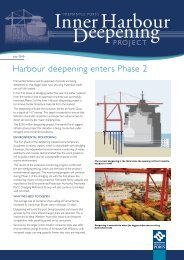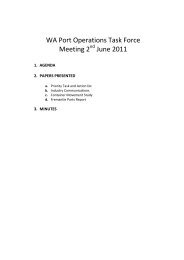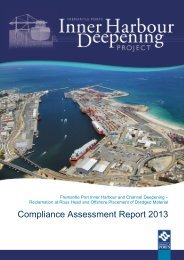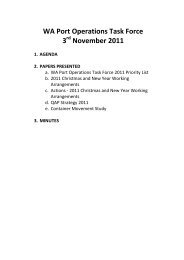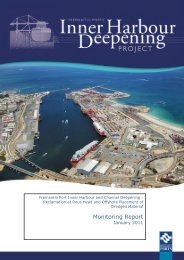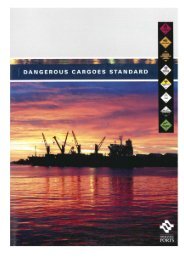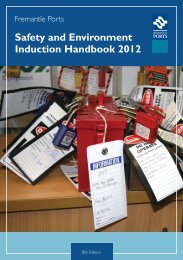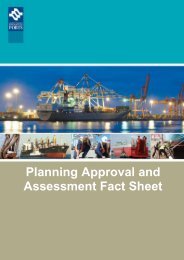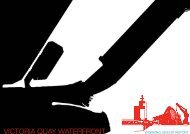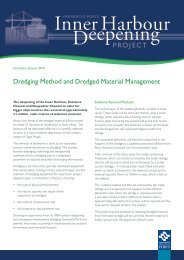IHD Engineering Awards submission - Fremantle Ports
IHD Engineering Awards submission - Fremantle Ports
IHD Engineering Awards submission - Fremantle Ports
Create successful ePaper yourself
Turn your PDF publications into a flip-book with our unique Google optimized e-Paper software.
Mandatory Judging Criteria<br />
Criteria 6:<br />
Contribution to sustainable development<br />
The material to be dredged underwent extensive testing,<br />
showing that the sediments would not pose a risk to the<br />
environment or human health. Similarly excavated material<br />
was only reused for the Rous Head reclamation works after<br />
testing confirmed its suitability.<br />
The works were undertaken in compliance with projectspecific<br />
Environmental Management Plans addressing<br />
environmental risks specific to each component of<br />
construction activities. Weekly environmental inspections<br />
were performed and all incidents were recorded and<br />
followed up.<br />
Efficient use of natural resources while<br />
providing for beneficial use<br />
A strong emphasis was given to waste minimisation and<br />
material reuse. Total dredging volumes were minimised<br />
through detailed planning studies and temporary site<br />
facilities were designed and located to provide a longerterm<br />
benefit to future operations. Independent water<br />
quality monitoring was undertaken throughout the project<br />
beyond the requirements of the environmental approval<br />
conditions. The monitoring involved frequent water testing<br />
at more than 30 sites as well as regular aerial photography,<br />
seagrass and coral monitoring.<br />
About 480,000 tonnes of limestone and granite were used<br />
to construct a seawall extension at Rous Head. Some of<br />
the rock was reused from an existing seawall. Rock grading<br />
was carefully specified to maximise quarry yields and<br />
reduce waste.<br />
Dredge material from the deepening, material stockpiled<br />
at Rous Head from previous dredging campaigns and<br />
excavated material from the berth works were used to<br />
create 27 hectares of land for port purposes. Dredged<br />
material was placed hydraulically to avoid the need<br />
to import engineered fill and to limit the amount of fill<br />
requiring energy intensive soil improvement works.<br />
A design modification to the berth works reduced the<br />
diameter and thickness of piles used to allow for local<br />
manufacture. This reduced the tonnage of steel required<br />
as well as transportation distances.<br />
Using precast concrete elements also allowed for the<br />
combined steel and timber moulds to be reused.



